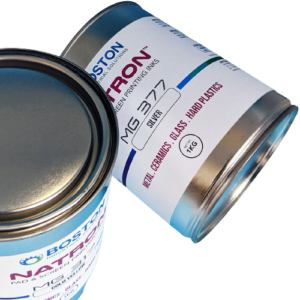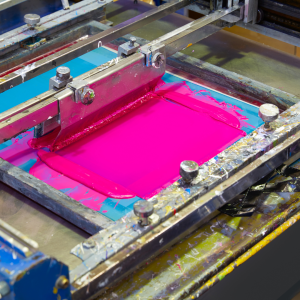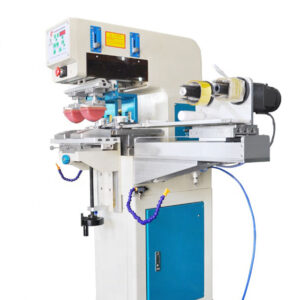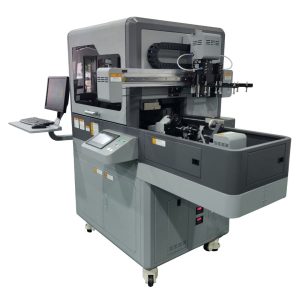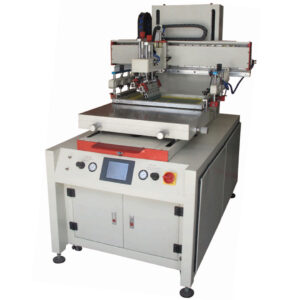Pad printing machines have been around for a while now, but their applications remain the same. Whether they are open-ink well or closed-cup machines, their functionality is indispensable in today’s world of manufacturing and customization. These versatile machines deliver precision and consistency in branding and marking products. A key advantage of this printing equipment is its ability to adapt to various surfaces and deliver crisp prints. For this reason, the promotional items, electronic components, medical devices, power tools, and apparel industries all depend on and use the silicone pad printing machine. Let’s explore the technology, applications, and some key advantages of silicone pad printing.
Basics of silicone pad printing
Silicone pad printing (pad printing or tampography) is an efficient printing process for transferring pad printing ink from an etched plate to a 3-D object using a silicone pad. This printing process enables the application of detailed designs to a wide range of substrates, including plastics, glass, ceramics, silicone, rubber, metal, and more. Using our Natron® pad printing inks with this printing process results in permanent and durable prints, irrespective of the substrate.
Key components of a silicone pad printing machine
We will review the key components of a pad printing machine.

- Cliché: There are two components here: the laser or photopolymer plate, which has the image etched, and the subplate, which is 10 mm thick.
- Ink cup assembly: The ink cup assembly has several components: the cup housing, vent plug, O-ring, and ink cup ceramic ring. The cup holds the ink and cleans the excess ink from the etch. This ensures that only the right amount of ink is transferred from the plate.
- Silicone pad printing pad: Also known as a tampon, the pads pick up the ink from the etch and transfer it to the object. We offer various pad sizes and shapes for any printing application that you can think of.
- Tooling (fixture): The pad print tooling fixtures holds the object and positions it for accurate printing.
Pad printing supplies: other necessary pad printing supplies include pad printing ink, solvent, and ink hardener for 2-component inks. Learn more about what is pad printing ink.
The most common applications
There are very many industries that use pad printing machines. While the list is endless, we will review industries where these machines are commonly used.
- Promotional products: Pad printing is excellent for printing irregular-shaped objects. This makes it a popular choice for personalization. Examples of promotional products include key chains, pens, silicone wristbands, and drinkware.
- Electronics and components: Electronics, PCBs, and connectors require precise markings. The pad printer machine not only plays this crucial role but is also excellent for branding these components.
- Medical devices: Medical devices and products require not only intricate markings but also sterile markings. This is a feat that can only be achieved with pad printing. Examples of medical devices include IV sets, surgical instruments, syringes, etc.
- The automotive industry uses this printing method to mark and print on gear knobs, indicators, internal components, and many other parts.
- Textiles and the apparel industry use this printing method to print labels, care instructions, and logos on clothing and clothing accessories.
- Glassware and ceramic products require high-quality prints that are dishwasher-safe and resistant to chemicals and wear. Pad printing coupled with Natron MG Series inks for metals and glass enables decorators to achieve permanent prints on glass, ceramics, tiles, and metals.
- Power tools and toolsets require high-quality and durable prints. The most common plastic used for power tools is ABS. To print on this material, either the EK Series or the TP Series is perfect for the application.
Other common industries include sporting goods, the toy industry, cosmetic packaging, etc.
Why you should consider a pad printing machine for your next application
Silicone pad printing machines are versatile. They are easy to adapt to a wide range of substrates and 3D products. This allows for the ability to print intricate prints on otherwise impossible parts.
Additionally, these machines offer high precision and repeatability, which ensures that every print is consistent and of the highest quality.
Except for silicone inks, the ink used with this printing method dries to touch quickly, reducing the chances of smudging and smearing. Check out our pad printing ink line. Additionally, once these inks are cured, they are durable, abrasion-, chemical-, and weather-resistant.
Sustainability and environmental friendliness—this printing method has very little waste. It uses very little material per print compared to any other printing method.
Lastly, silicone printing is a very cost-effective method. The estimated cost per print is about $0.001 per square inch.
To learn more about this printing process and how we can help you get set up, please contact us, and we will help you get started.


